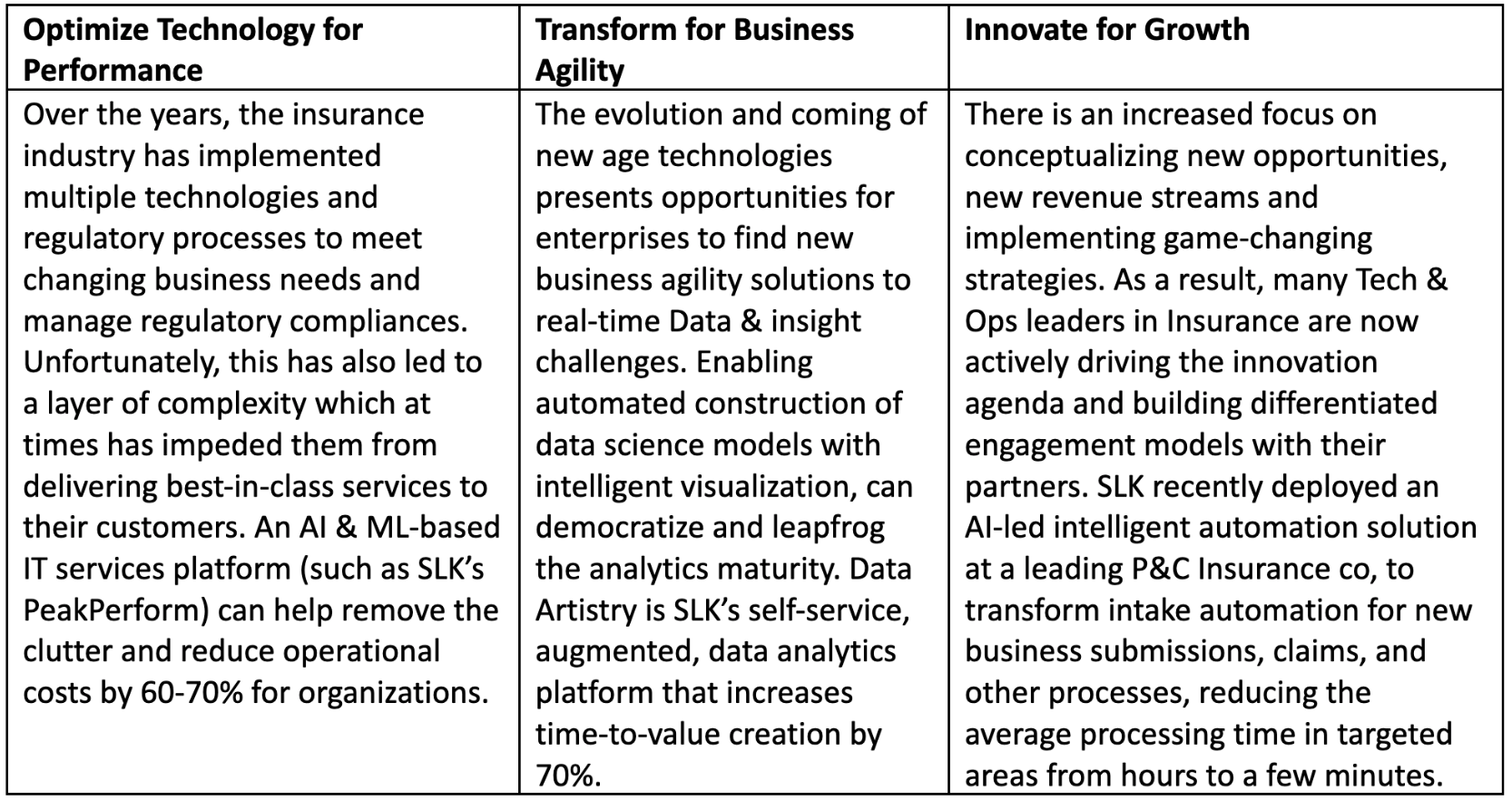KEY TAKEAWAYS:
--A "human in the loop" model lets insurers fight rising costs through rapid adoption of advancements in AI.
--The trifecta of AI, automation and analytics allows for breakthroughs in requisitions, claims, personalization, predictive analytics and embedded insurance.
----------
The insurance industry dates back to ancient Babylon and China, where merchants would pool their resources to protect themselves against losses from piracy and theft. The concept landed on the U.S. shores in 1752, when Benjamin Franklin co-founded the first insurance company in Philadelphia. Since then, the industry has grown to become a massive global enterprise. According to Insurance (Providers, Brokers and Re-Insurers) Market Global Report 2022, the global insurance market is estimated to grow from $5.38 trillion in 2021 to $8.39 trillion in 2026.
Key Challenges – Inflation and Natural Disasters
The industry needs sharp efficiency improvements to combat inflation, which skyrocketed from 1.23% in 2020 in the U.S. to 8% in 2022 during the COVID-19 pandemic, consequently increasing the costs of paying claims. Furthermore, due to climate change, population growth and migration to vulnerable areas such as coasts and river floodplains, there were 60 $1 billion natural disasters in the U.S. in the last three years, which is already nearly half of the 128 in the entire previous decade (2010-2019), and those numbers are inflation-adjusted to 2022 dollars.
Technology has the potential to offset these rising costs. The insurance industry needs to adopt a "human in the loop" model for rapid adoption of technological advancements in artificial intelligence.
There are numerous debates on the advancement in AI, thanks to ChatGPT and several similar generative AI tools. While there are concerns about the potential risks and unintended consequences that could arise, generative AI models could revolutionize the way humans interact with machines. These technologies have the potential to reinvent the insurance industry -- increase requisition and claims efficiency by up to 80%, reduce premiums through more detailed customer information and insights and even improve the economy.
While AI, intelligent automation and analytics can revamp the insurance industry, insurers need to ensure that the data they collect is protected and used ethically.
AAA Trifecta
AI can be leveraged to analyze large datasets and identify patterns and trends that would be difficult or impossible for humans to detect. Intelligent automation can streamline processes, such as claims, and can handle routine tasks, such as sending out policy renewal notices. Analytics can identify patterns of fraud and detect suspicious claims.
Listed below are five ways in which the trifecta of AI, automation and analytics can transform insurance:
1. Breakthrough in requisitions
The insurance industry still struggles with ingesting, aggregating, contextualizing and processing incoming applications. This is partially due to many sources of unstructured application data such as paper documents, emails and voicemails that must be processed and incorporated into applications to properly evaluate risk and provide the best quote based on the most complete possible applicant profile. AI can automate most of the data acquisition, contextualization and decision-making with up to 90% accuracy, resulting in business benefits of up to 80% greater efficiency. AI allows for processing five times the volume of applications, resulting in more revenue.
2. Advancements in claims
Automated processes and AI will largely replace the adjuster who travels to view and photograph damage and file a report, followed by days or weeks of review by an in-house expert. The new AI and image-processing technologies based on customer-generated images and geospatial data can reduce claims processing from days or weeks to hours or even minutes.
3. Predictive analytics
Once policies are in place, AI and predictive analytics technologies can further refine quotes, risk assessment and customer service by predicting which customers, regions and ZIP codes will likely incur losses and when and what types of losses will occur.
4. Personalization by leveraging AI
The more an insurer knows about a customer and their requirements, the better the insurer can service the customer and provide the best possible coverage and rate. AI and predictive analytics based on current and historical data combined with marketing automation can help insurers tailor their offerings, resulting in better customer service, customer intimacy and revenue increases through new, appropriate offers and a higher percentage of renewals.
See also: Key Challenges on AI, Machine Learning
5. Innovation in embedded insurance
It’s common to embed offers for extended warranties with product sales or travel insurance with travel purchases, but there are many more possibilities for embedded insurance using AI, intelligent automation, analytics and geospatial data, which will help improve customer intimacy and revenue opportunities while not being overly invasive.
According to a recent report by PwC, 54% of insurance CEOs say implementation of AI solutions has increased productivity in their businesses and believe AI will transform their industry in the next five years.

In today's fast-paced world, businesses need to make better and more informed decisions to stay competitive and grow. This is where AI can be incredibly valuable with a "human in loop" model that can provide timely and efficient insights in real time and support insurance business leaders to make better decisions.






